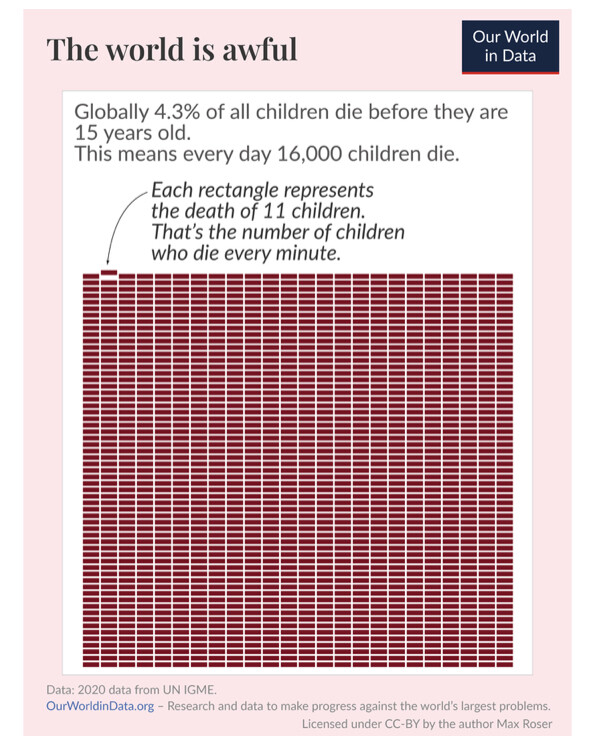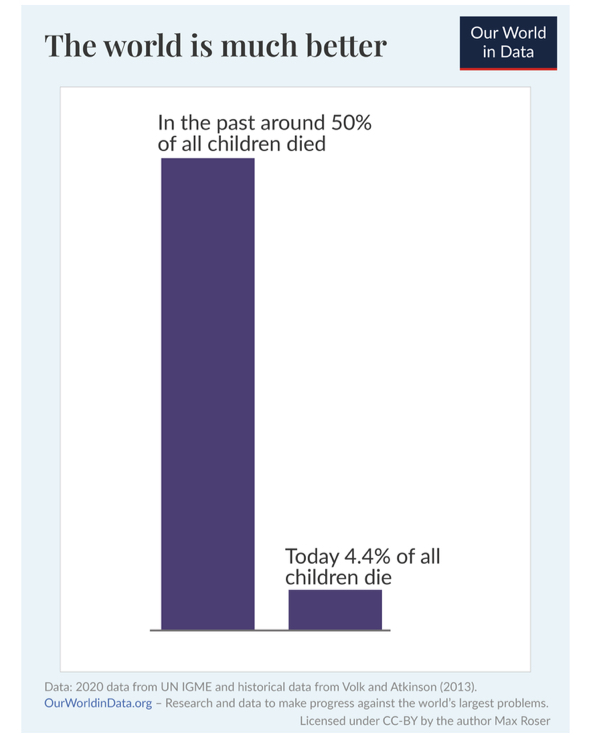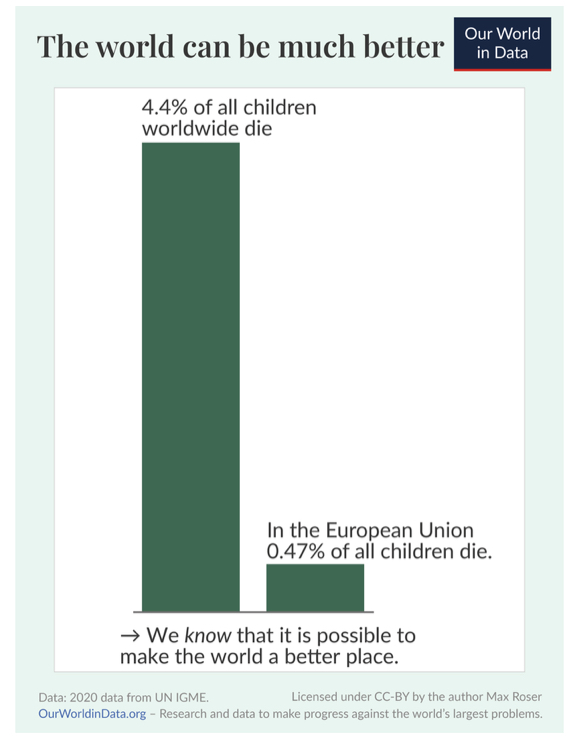Perhaps it’s also because we humans have difficult holding more than one concept in our mind at the same time without feeling contradictions and our mind simplifying and just choosing one of multiple true concepts:
The world is awful. The world is much better. The world can be much better.
It is wrong to think these three statements contradict each other.
The world is awful. The world is much better. The world can be much better
We need to see that they are all true to see that a better world is possible.
The world is awful. The world is much better. The world can be much better. All three statements are true at the same time.
Discussions about the state of the world too often focus on the first statement
A pushback on this narrative takes it to the other extreme, which is equally damaging. Solely communicating the progress that the world has achieved becomes unhelpful, or even repugnant, when it glosses over the problems people are facing.
But to see that a better world is possible, we need to see that both are true at the same time: the world is awful, and the world is much better
To illustrate what I mean, I will use the example of one of humanity’s biggest tragedies: the daily deaths of thousands of children.
The world is awful
Globally, 4.4% of all children die before they are 15 years old.
This means that 5.9 million children die every year. These are 16,000 dead children on any average day, 11 children every minute.2

Clearly, a world where thousands of tragedies happen every single day is awful.
The world is much better
…it is hard to imagine how dire living conditions once were, making it difficult to grasp just how much the world has changed.
Data can help to bring the scale of change to mind. Historians estimate that in the past, around half of all children died. This was true until the 19th century no matter where in the world a child was born.
It’s hard to imagine, but child mortality in the very worst-off places today is much better than anywhere in the past.

Unfortunately, long-run data on how living conditions have changed is rarely studied in school and rarely reported in the media. As a result, many are entirely unaware of even the most fundamental positive developments in the world.
The world can be much better
Progress over time shows that it was possible to change the world in the past, but one may wonder if this progress can continue into the future.
Perhaps we were born at that unlucky moment in history at which progress has to come to a halt?
Studying the global data suggests that the answer is no. It is possible to make the world a better place.
The best-off places show that extremely low child mortality is not just a possibility but already a reality.

If we want more people to dedicate their energy and money to making the world a better place, then we should make it much more widely known that it is possible to make the world a better place.
For this, we have to remember that all three statements are true at the same time: